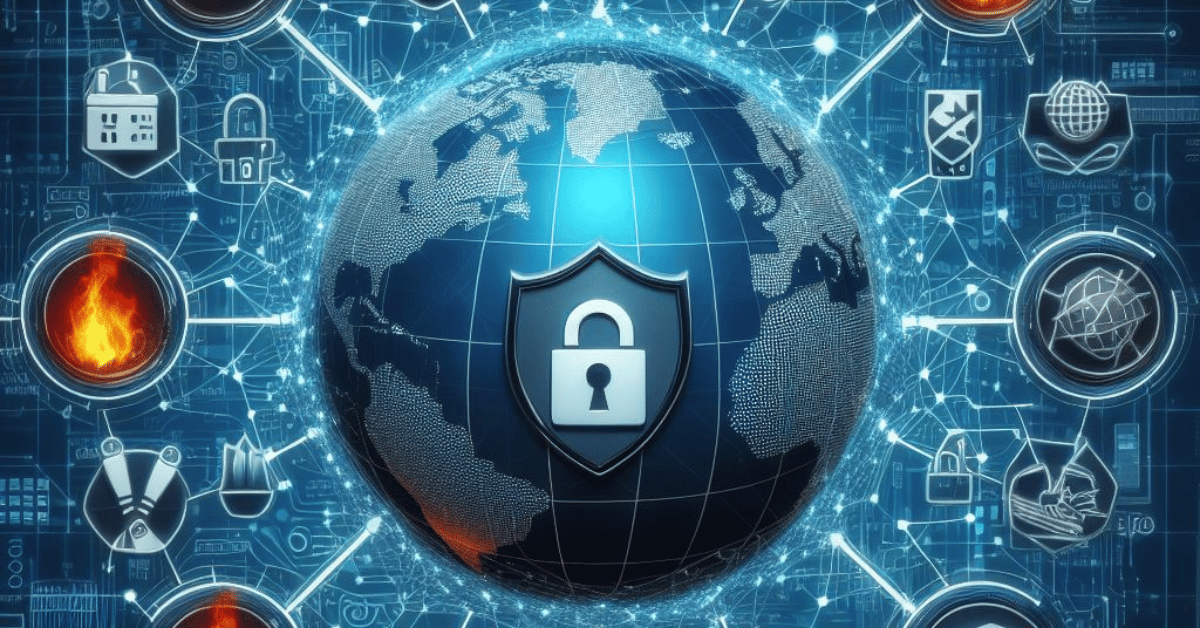Importance of Data Security in the Banking Sector

Data security is of utmost importance in the banking sector due to the sensitive nature of the information that is handled daily. Banks deal with a vast amount of confidential data, including the personal and financial information of their customers, which must be protected from theft, fraud, and unauthorized access. One of the main reasons why data security is essential in the banking sector is to prevent financial losses.
Understanding the Threat Landscape
To ensure data security in the banking sector, it is crucial to understand the threat landscape. Cybercriminals are constantly evolving their tactics to gain access to sensitive information, and banks must stay ahead of the curve to protect themselves and their customers. Some common threats include phishing attacks, malware, ransomware, and social engineering.
Emerging Cybersecurity Risks in The Banking Sector
In addition to the common threats mentioned above, there are also emerging cybersecurity risks in the banking sector. One of these is the use of artificial intelligence (AI) and machine learning (ML) by cybercriminals to launch more sophisticated attacks. Another risk is the increasing use of mobile banking, which can lead to vulnerabilities in the security of mobile devices and networks. Additionally, the rise of the Internet of Things (IoT) presents new challenges for banks to secure their networks and devices.
Common Vulnerabilities Exploited By Hackers
There are many common vulnerabilities that hackers exploit to gain unauthorized access to systems and data. Some of this include:1. Weak passwords: Passwords that are easy to guess or crack are a common vulnerability that hackers exploit. It is important to use strong passwords that are difficult to guess and to change them regularly.
2. Unpatched software: Software that is not up-to-date with the latest security patches can be vulnerable to attacks.
Consequences of Data Breaches in Banking
Data breaches in the banking industry can have severe consequences for both the customers and the financial institution. Some of the consequences include:
1. Financial losses: Data breaches can result in financial losses for the bank as well as its customers. Customers may lose money as a result of fraudulent transactions, while the bank may face legal and regulatory fines.
2. Reputation damage: Data breaches can damage the reputation of the bank, leading to a loss of trust among customers.
Regulatory Framework for Data Security
The regulatory framework for data security is becoming increasingly stringent, with laws and regulations such as the General Data Protection Regulation (GDPR) in the European Union and the California Consumer Privacy Act (CCPA) in the United States. Financial institutions are required to comply with these regulations and implement measures to protect customer data from breaches and cyber attacks. Some of the measures that financial institutions can take to enhance data security include implementing multi-factor authentication, encrypting sensitive data, conducting regular security audits, and providing cybersecurity training.
Establishing a Robust Security Infrastructure
Data Encryption
Data encryption is a crucial measure for financial institutions to ensure the confidentiality and integrity of customer data. Encryption is the process of converting plain text into a code, which can only be deciphered with a key or password. By encrypting sensitive data, financial institutions can prevent unauthorized access and protect customer information from cybercriminals.
Access Control Measures
Access control measures are an essential aspect of data security in any organization. These measures are designed to limit access to sensitive data to only authorized personnel, thereby reducing the risk of unauthorized access, theft, or misuse of data. To ensure effective access control, organizations should implement a role-based access control (RBAC) system that assigns specific access levels to different users based on their job functions and responsibilities.
Network Security

Network security is another crucial aspect of data security in organizations. It involves implementing measures to protect the organization’s network infrastructure from unauthorized access, hacking, and other cyber threats. To ensure network security, organizations should implement firewalls, intrusion detection and prevention systems, and virtual private networks (VPNs). They should also ensure that all network devices, including routers and switches, are configured securely and regularly updated with the latest security patches.
Endpoint Security
Endpoint security is the practice of securing individual devices, such as laptops, desktops, and mobile devices, that connect to an organization’s network. Endpoint security involves deploying security software, such as antivirus and anti-malware programs, on each device to protect against cyber threats. It also involves implementing policies and procedures for securing devices, such as requiring strong passwords and encryption of sensitive data.
Security Audits and Testing
Security audits and testing are essential components of a comprehensive security strategy. Security audits involve reviewing an organization’s security policies, procedures, and controls to identify vulnerabilities and assess the effectiveness of existing security measures. Testing involves simulating cyber attacks to identify weaknesses in an organization’s security defences. This can include penetration testing, vulnerability scanning, and social engineering testing. Regular security audits and testing can help organizations stay ahead of emerging threats and ensure that their security measures are up-to-date and effective.
Data Governance and Privacy
Data governance and privacy refer to the policies, procedures, and controls put in place to ensure the proper management and protection of an organization’s data. This includes data classification, access controls, data retention policies, and data destruction policies. Data governance also involves ensuring that data is accurate, complete, and consistent across an organization. Privacy policies and practices are also an important aspect of data governance.
Data Classification and Protection
Data classification is the process of categorizing data based on its sensitivity and value to the organization. This helps to determine the appropriate level of protection and security controls required for each type of data. For example, sensitive data such as financial records, personal information, and trade secrets may require stricter protection measures than less sensitive data such as marketing materials or public information.
Privacy Policies and Consent
Privacy policies are statements that explain how an organization collects, uses, and protects personal information. These policies are important for building trust with customers and complying with privacy laws and regulations. Consent is also a key aspect of data protection, as it ensures that individuals have given their permission for their data to be collected and used in specific ways. Organizations must obtain clear and informed consent from individuals before collecting and using their personal information.
Incident Response and Data Breach Management
Incident response and data breach management are crucial for protecting personal information and maintaining the trust of customers. Organizations should have a plan in place to respond to security incidents and data breaches, including identifying the source of the breach, containing the damage, and notifying affected individuals and authorities as required by law. In addition, organizations should regularly review and update their security measures to prevent future incidents and protect personal information.
Employee Training and Awareness
Employee training and awareness are also important aspects of maintaining data security. Organizations should provide regular training to employees on safe computing practices, such as using strong passwords, avoiding phishing scams, and properly handling sensitive information. Employees should also be trained on the organization’s security policies and procedures, and be made aware of the potential consequences of failing to follow them. Regular reminders and updates on security best practices can help keep employees vigilant and reduce the risk of security incidents.
Emerging Technologies in Data Security
One emerging technology in data security is the use of blockchain. Blockchain is a decentralized and secure digital ledger that can be used to store and verify transactions. It has the potential to enhance data security by providing a tamper-proof and transparent record of all transactions. Another technology is artificial intelligence (AI), which can be used to detect and prevent security threats in real time. AI can also be used to analyze large amounts of data to identify patterns and potential vulnerabilities.
Conclusion
In conclusion, the use of blockchain and artificial intelligence technologies can greatly enhance data security. Blockchain provides a tamper-proof and transparent record of transactions, while AI can detect and prevent security threats in real-time. These technologies have the potential to revolutionize the way we approach security and protect sensitive information.
Frequently Asked Questions (FAQs)
What is the biggest data security threat faced by the banking sector?
The biggest data security threat faced by the banking sector is cyber attacks, which can result in data breaches, financial losses, and reputational damage. These attacks can be carried out through various means such as phishing, malware, ransomware, and social engineering.
How can banks ensure compliance with data protection regulations?
Banks can ensure compliance with data protection regulations by implementing strong data protection policies and procedures, regularly training employees on data protection best practices, conducting regular security audits and risk assessments, and staying up-to-date with the latest regulatory requirements. Additionally, banks can work with third-party security experts to assess and improve their security measures.
What are the consequences of a data breach in the banking sector?
The consequences of a data breach in the banking sector can be severe and far-reaching. It can result in financial losses for both the bank and its customers, damage to the bank’s reputation and loss of customer trust, and legal and regulatory penalties. The stolen data can be used for identity theft and fraud, which can lead to further financial losses for customers. The bank may also face lawsuits from affected customers or regulatory bodies, which can result in significant financial damages.
What should banks do in the event of a data breach?
In the event of a data breach, banks should take immediate action to contain the breach and minimize the damage. This may involve shutting down affected systems, disconnecting from the internet, and notifying relevant authorities and customers. The bank should also conduct a thorough investigation to determine the cause and extent of the breach, and take steps to prevent similar incidents from occurring in the future.
Are there any emerging technologies that can strengthen data security in banking?
Yes, several emerging technologies can strengthen data security in banking. One such technology is blockchain, which provides a secure and transparent way to store and transfer data. This technology can be used to create secure digital identities for customers, as well as to secure transactions and prevent fraud. Another emerging technology is biometric authentication, which uses unique physical characteristics such as fingerprints or facial recognition to authenticate users. This can help to prevent identity theft and other forms of fraud.
